Evaluating the Performance of Functionalized Carbon Structures with Integrated Optical Fiber Sensors under Practical Conditions
Abstract
1. Introduction
2. Materials and Methods
2.1. Fabrication of FCS
2.2. Fabrication of Concrete Blocks Containing FCS
2.3. Experimental Set-Up to Evaluate Sensor Performance
3. Results and Discussion
3.1. Performance of FBG Sensors
3.2. Performance of Spatial Strain Measurement Using OFDR
4. Summary
Author Contributions
Funding
Acknowledgments
Conflicts of Interest
References
- Scheerer, S.; Schütze, E.; Curbach, M. Strengthening and Repair with Carbon Concrete Composites—The First General Building Approval in Germany. In Proceedings of the International Conference on Strain-Hardening Cement-Based Composites (SHCC 2017), Dordrecht, Germany, 18–20 September 2018. [Google Scholar]
- Tan, C.H.; Shee, Y.G.; Yap, B.K.; Adikan, F.R.M. Fiber Bragg grating based sensing system: Early corrosion detection for structural health monitoring. Sens. Actuators A Phys. 2016, 246, 123–128. [Google Scholar] [CrossRef]
- Bremer, K.; Meinhardt-Wollweber, M.; Thiel, T.; Werner, G.; Sun, T.; Grattan, K.T.V.; Roth, B. Sewerage tunnel leakage using a fibre optic moisture-detecting sensor system. Sens. Actuators A Phys. 2014, 220, 62–68. [Google Scholar] [CrossRef]
- Nguyen, T.H.; Venugopalan, T.; Chen, S.; Sun, T.; Grattan, K.T.V.; Taylor, S.E.; Basheer, P.A.M.; Long, A.E. Fluorescence based fibre optic pH sensor for the pH 10–13 range suitable for corrosion monitoring in concrete structures. Sens. Actuators B Chem. 2014, 191, 498–507. [Google Scholar] [CrossRef]
- Rodríguez, G.; Casas, J.R.; Villaba, S. Cracking assessment in concrete structures by distributed optical fiber. Smart Mater. Struct. 2015, 24, 035005. [Google Scholar] [CrossRef]
- Mao, J.; Xu, F.; Gao, Q.; Liu, S.; Jin, W.; Xu, Y. A Monitoring Method Based on FBG for Concrete Corrosion Cracking. Sensors 2016, 16, 1093. [Google Scholar] [CrossRef] [PubMed]
- Habel, W.R. Faseroptische Sensoren für hochaufgelöste Verformungsmessungen in der Zementsteinmatrix. BAM Forschungsbericht 2003, 246, 1–204. [Google Scholar]
- Kahandawa, G.C.; Epaarachchi, J.; Wang, H.; Lau, K.T. Use of FBG Sensors for SHM in Aerospace Structures. Photonic Sens. 2012, 2, 203–214. [Google Scholar] [CrossRef]
- Okabe, Y.; Yashiro, S.; Kosaka, T.; Takeda, N. Detection of transverse cracks in CFRP composites using embedded fiber Bragg grating sensors. Smart Mater. Struct. 2000, 9, 832–838. [Google Scholar] [CrossRef]
- Yashiro, S.; Okabe, T.; Takeda, N. Damage identification in a holed CFRP laminate using a chirped fiber Bragg grating sensor. Compos. Sci. Technol. 2007, 67, 286–295. [Google Scholar] [CrossRef]
- Takeda, S.; Okabe, Y.; Takeda, N. Delamination detection in CFRP laminates with embedded small-diameter fiber Bragg gratings sensors. Compos. Part A 2002, 33, 971–980. [Google Scholar] [CrossRef]
- Bremer, K.; Weigand, F.; Zheng, Y.; Alwis, L.S.; Helbig, R.; Roth, B. Structural Health Monitoring Using Textile Reinforcement Structures with Integrated Optical Fiber Sensors. Sensors 2017, 17, 345. [Google Scholar] [CrossRef] [PubMed]
- Kashyap, R. Fiber Bragg Gratings; Academic Press: London, UK, 1999. [Google Scholar]
- Soller, B.J.; Gifford, D.K.; Wolfe, M.S.; Froggatt, M.E. High resolution optical frequency domain reflectometry for characterization of components and assemblies. Opt. Express 2005, 13, 666–674. [Google Scholar] [CrossRef] [PubMed]
- Schlangen, S.; Bremer, K.; Yheng, Z.; Böhm, S.; Steinke, M.; Wellmann, F.; Neumann, J.; Roth, B.; Overmeyer, L. Long-Period Gratings in Highly Germanium-Doped, Single-Mode Optical Fibers for Sensing Applications. Sensors 2018, 18, 1363. [Google Scholar] [CrossRef] [PubMed]
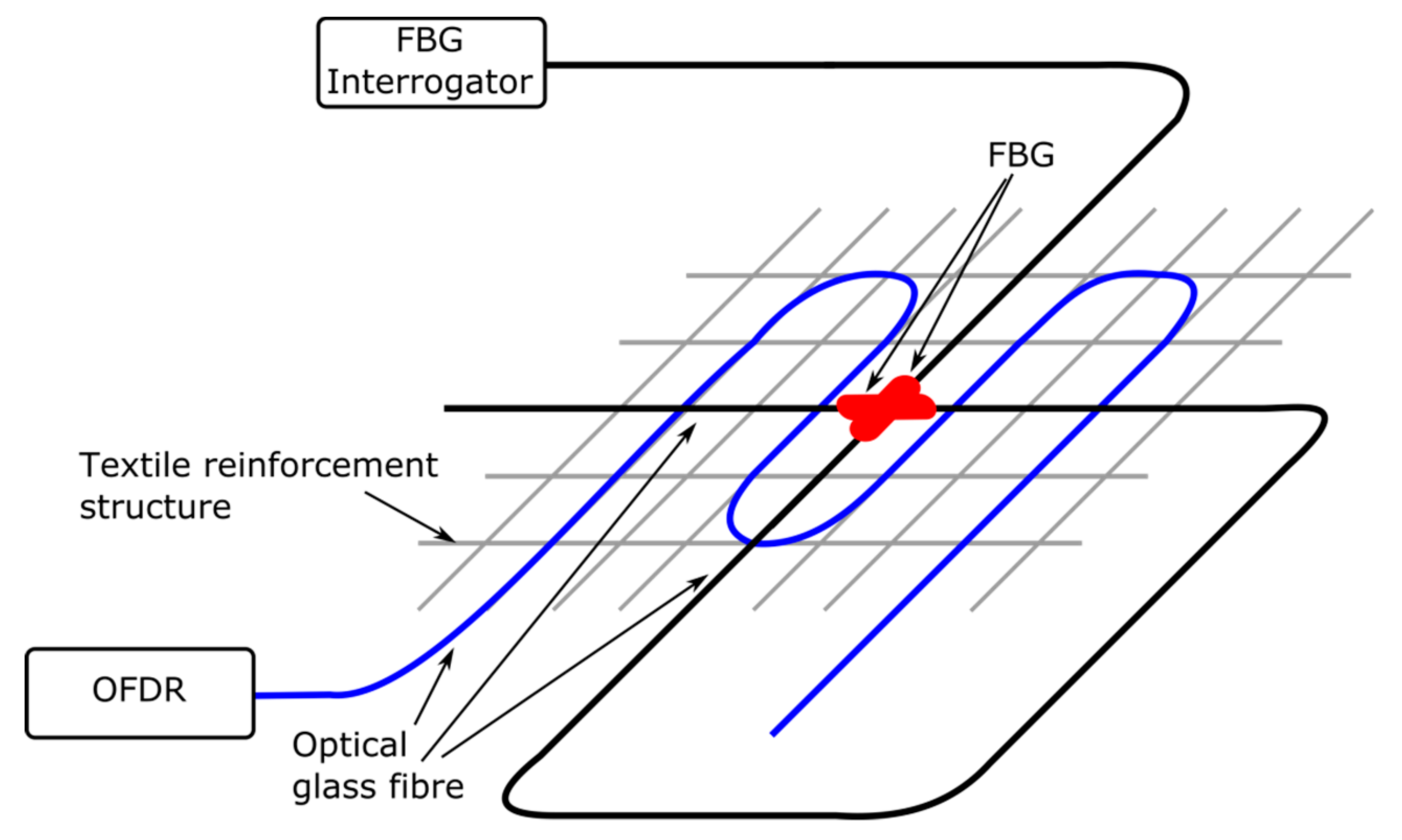
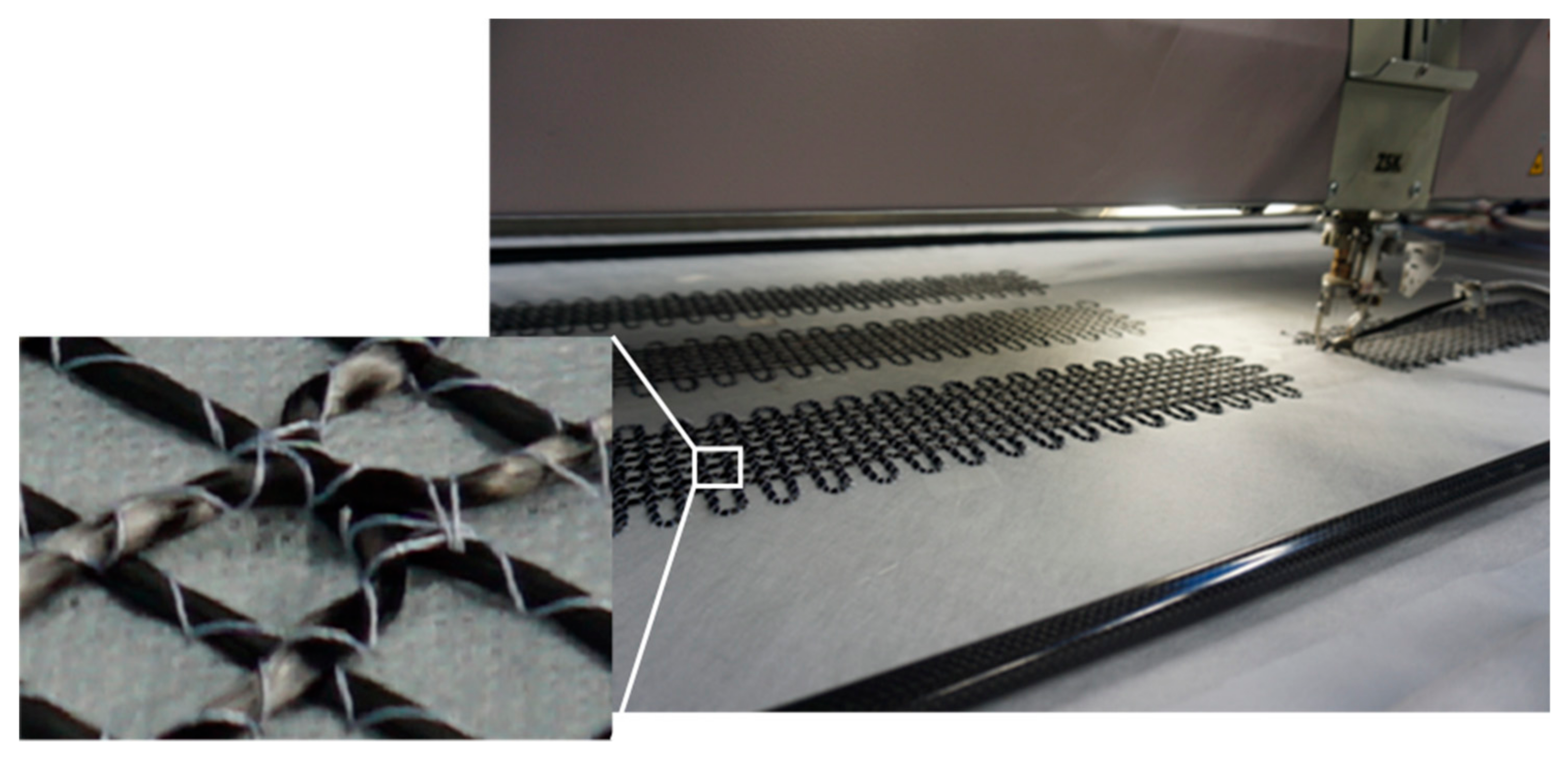
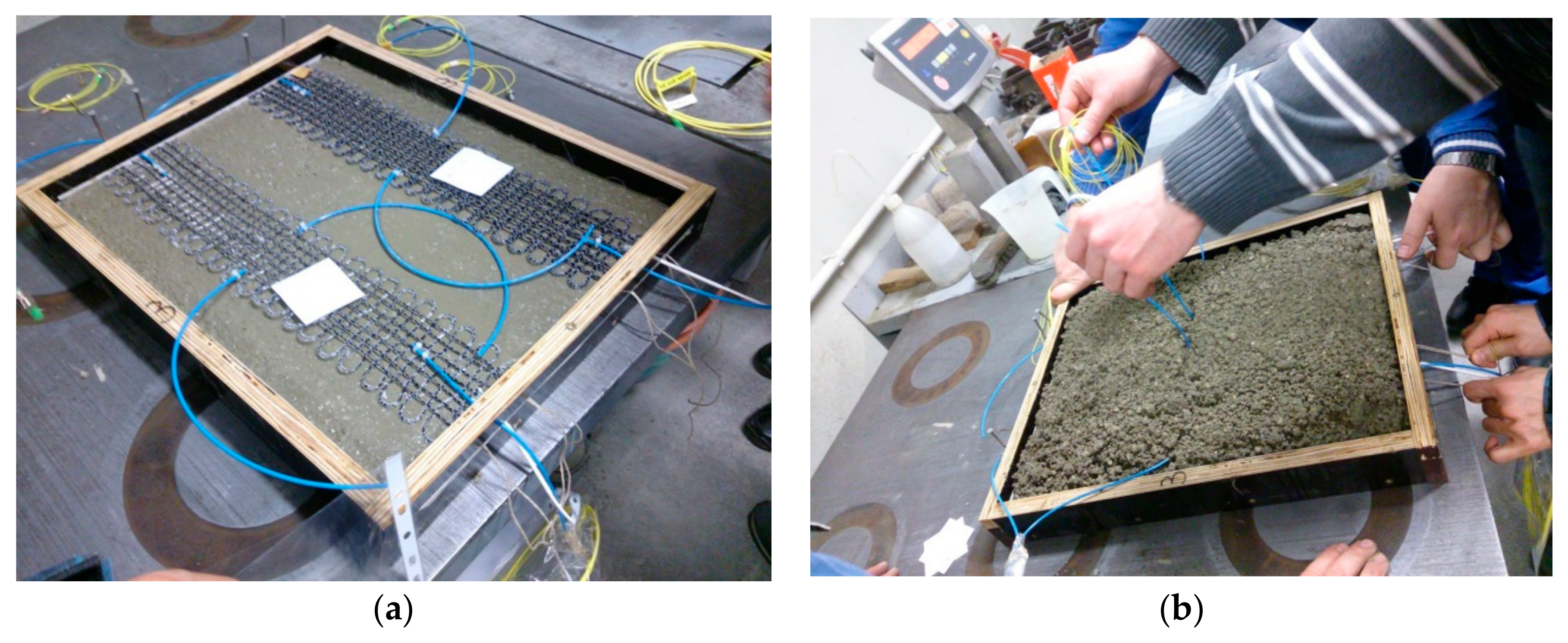
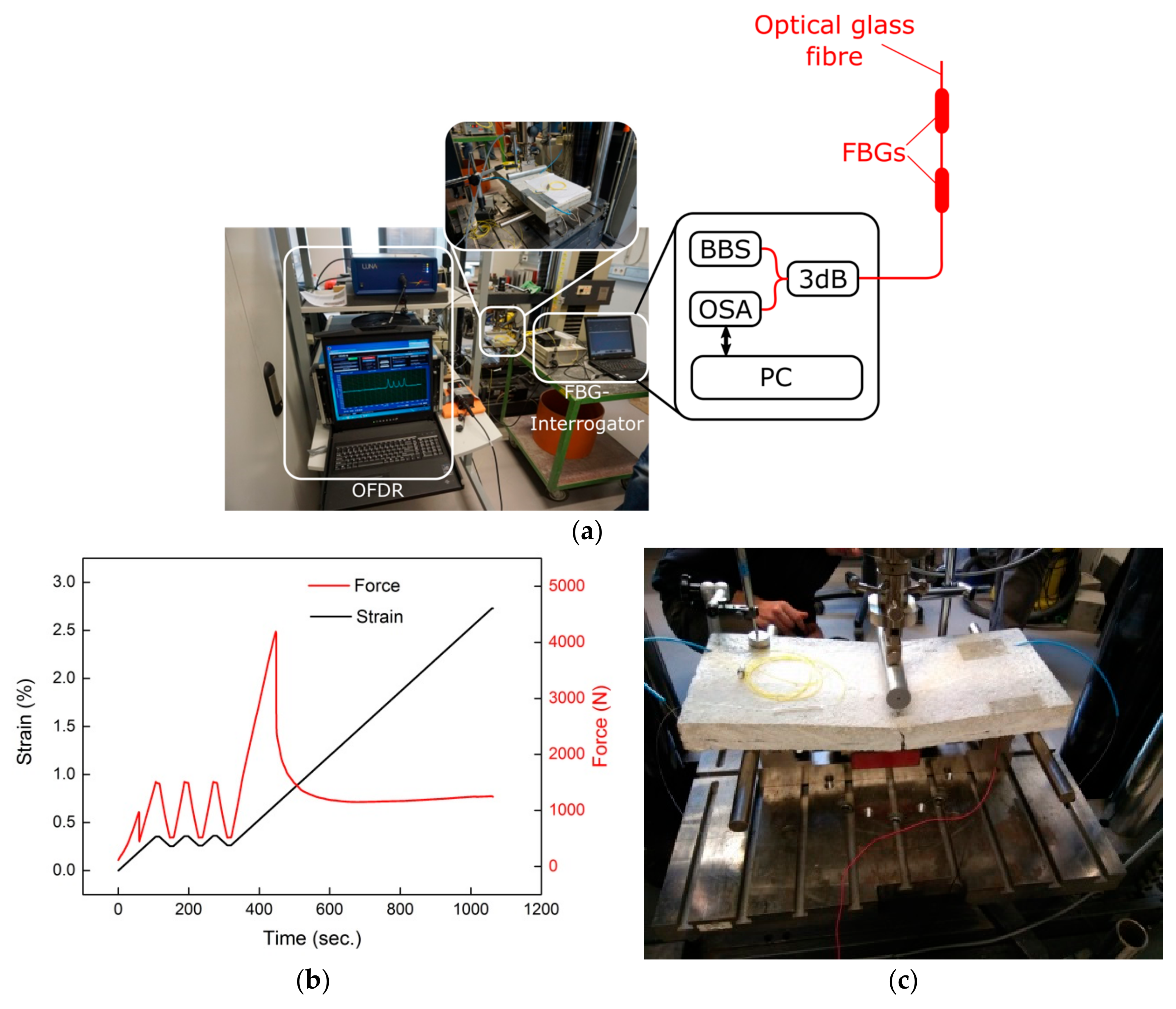
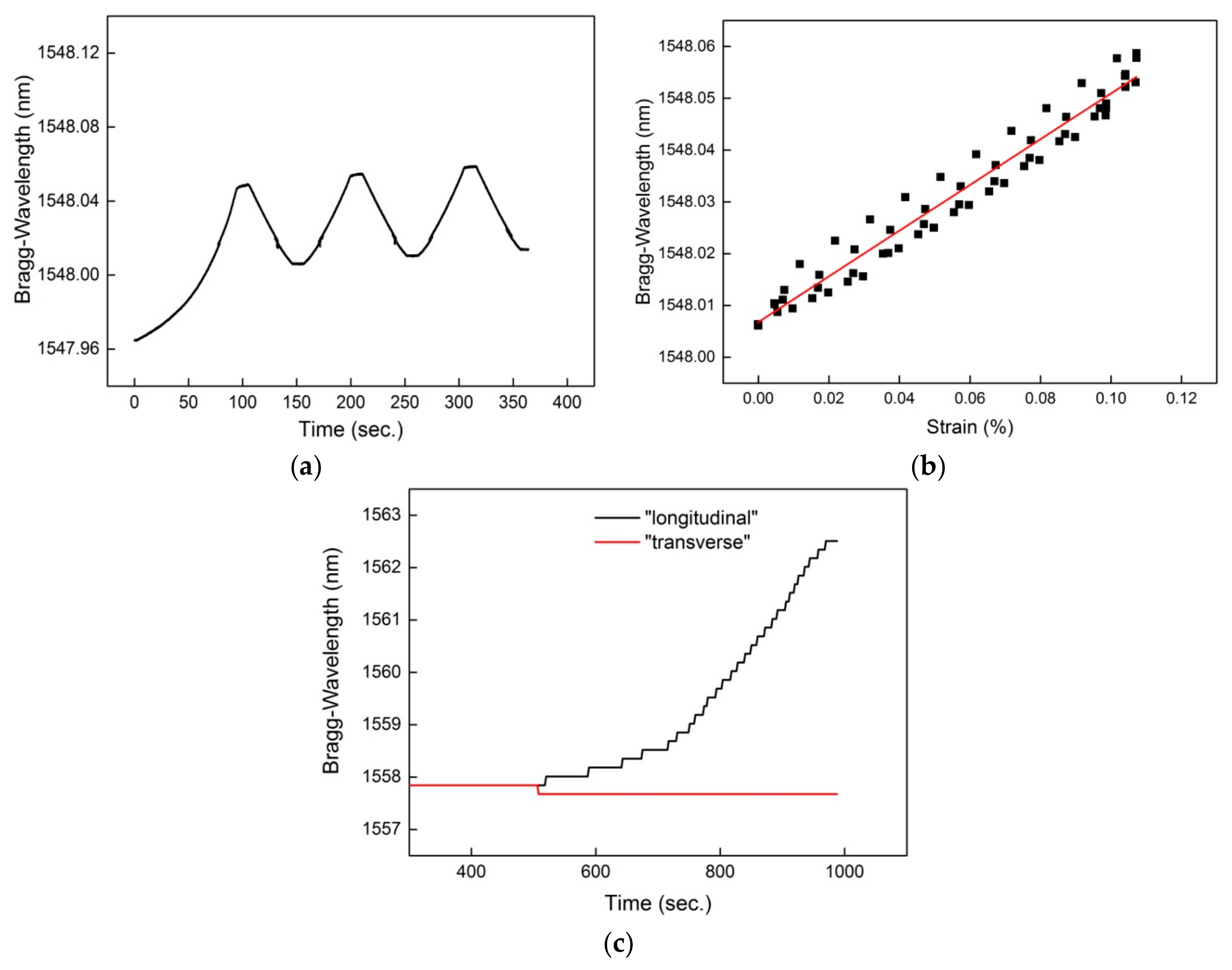
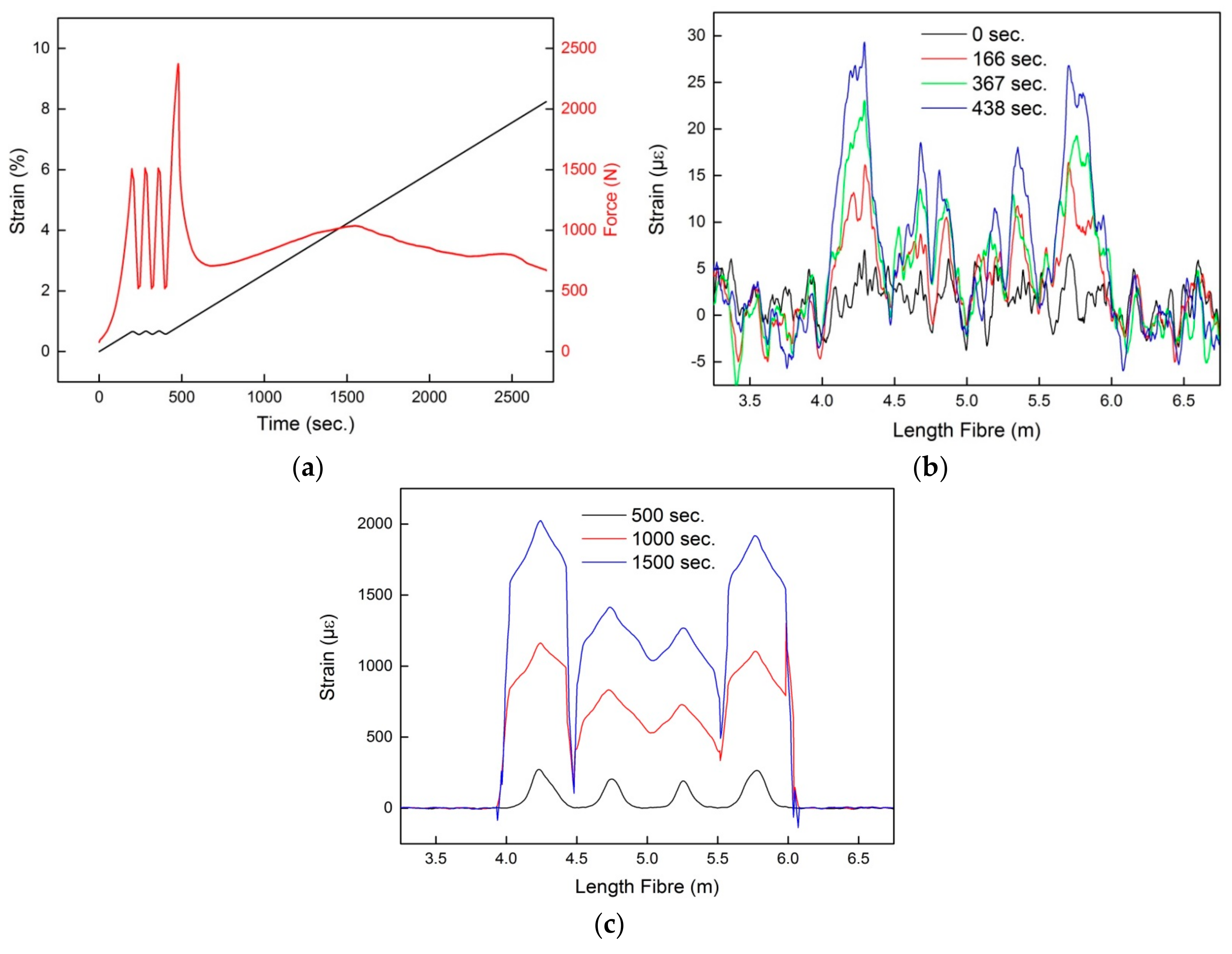
| Probe: | Performance before Applying Concrete (dB) | Performance after Applying Concrete (dB) |
|---|---|---|
| sample #1 | 57.36 | 57.4 |
| sample #2 | 57.02 | 57.08 |
| sample #3 | 55.93 | 55.85 |
© 2018 by the authors. Licensee MDPI, Basel, Switzerland. This article is an open access article distributed under the terms and conditions of the Creative Commons Attribution (CC BY) license (http://creativecommons.org/licenses/by/4.0/).
Share and Cite
Bremer, K.; Alwis, L.S.M.; Weigand, F.; Kuhne, M.; Zheng, Y.; Krüger, M.; Helbig, R.; Roth, B. Evaluating the Performance of Functionalized Carbon Structures with Integrated Optical Fiber Sensors under Practical Conditions. Sensors 2018, 18, 3923. https://doi.org/10.3390/s18113923
Bremer K, Alwis LSM, Weigand F, Kuhne M, Zheng Y, Krüger M, Helbig R, Roth B. Evaluating the Performance of Functionalized Carbon Structures with Integrated Optical Fiber Sensors under Practical Conditions. Sensors. 2018; 18(11):3923. https://doi.org/10.3390/s18113923
Chicago/Turabian StyleBremer, Kort, Lourdes S. M. Alwis, Frank Weigand, Michael Kuhne, Yulong Zheng, Marco Krüger, Reinhard Helbig, and Bernhard Roth. 2018. "Evaluating the Performance of Functionalized Carbon Structures with Integrated Optical Fiber Sensors under Practical Conditions" Sensors 18, no. 11: 3923. https://doi.org/10.3390/s18113923
APA StyleBremer, K., Alwis, L. S. M., Weigand, F., Kuhne, M., Zheng, Y., Krüger, M., Helbig, R., & Roth, B. (2018). Evaluating the Performance of Functionalized Carbon Structures with Integrated Optical Fiber Sensors under Practical Conditions. Sensors, 18(11), 3923. https://doi.org/10.3390/s18113923








